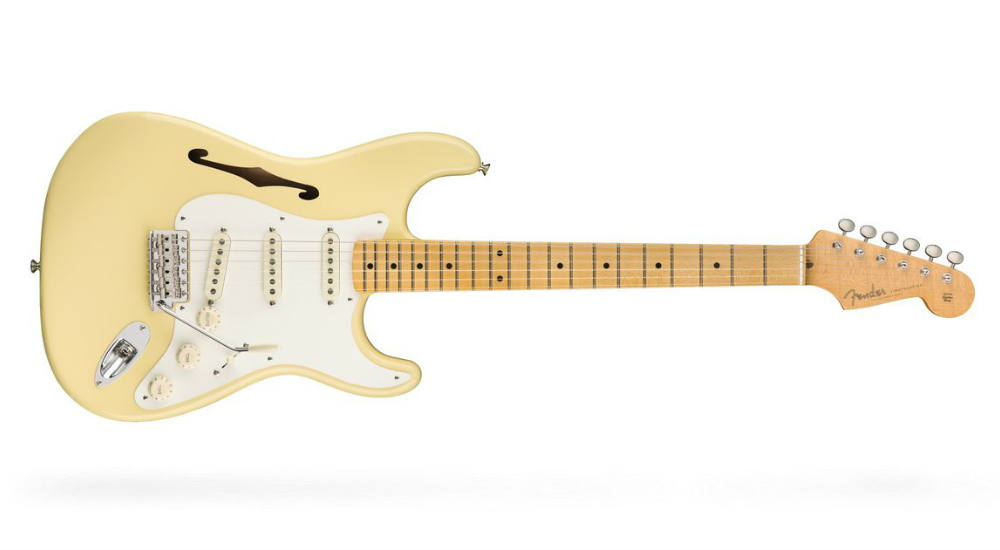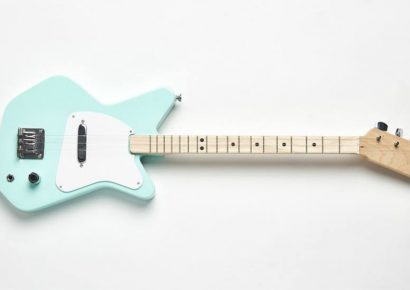This isn’t the first Stratocaster that Fender has made with an F-hole. There have been previous attempts through the Fender Custom Shop in particular, but where they differ is that they’ve all been missing the crucial Stratocaster comfort contours. Johnson and Fender worked over many different prototypes to nail the perfect way to maintain the Strat’s distinctive tummy cut and rounded body edges, instead of building a boxy Strat with binding or a squared off transition from top to side. Pick this guitar up with your eyes closed and your first thought will be, “How the hell is this Strat so light?”
The rest of the specs are pretty standard for an EJ Strat. The body is alder with a quarter-sawn maple neck and a nitrocellulose lacquer finish. There’s a ’57-style parchment pickguard, three single coil pickups wound to Johnson’s specs, and a traditional Stratocaster vibrato. As with the regular solid body EJ model, great care has been placed in the selection of the tremolo block, the number of trem springs, the neck shape, the fret type, and the electronics. (Fun fact: Johnson and Fender worked on a few prototype pickups designed for this guitar before realising that his existing pickups already did a great job of capturing this guitar’s unique tone – although at NAMM he told us they may revisit the idea in the future). The neck is a comfortable ’57 Soft V-shape, the fingerboard is a 12” radius (the same as an ES-335, instead of a vintage Stratocaster’s rounder 7.25” radius), and the 21 frets are medium-jumbo. The tremolo block is painted silver, and Fender uses ’57-style string recesses, a thin headstock with vintage-style staggered tuning machines, and an “ashtray” bridge cover if you wish to use it.
The two things you’ll notice most about this guitar – other than the resonance, which is something you can directly feel – is that it has a noticeable bump in the upper midrange, and that it sustains a little more than a Strat typically does at house volumes. It’s almost like playing through a really loud amp in terms of how the vibration of the strings and body work together to influence each other. It gets really addictive, really quickly. There’s also a little bit of a taming of the famous Stratocaster high end. Not enough to make the guitar sound dark though; in fact, the impression is of a more ‘sunny-sounding’ Strat. For the more abstract readers, it sounds like late afternoon sunlight as opposed to the searing midday sun directly overhead.
Eric Johnson has always used a Strat to weave his magic, so it’s only fitting that he be the one to wring this new tonality out of it over 60 years into the model’s existence. It’s still clearly a Strat in sound and style, and yet it does something that no Strat has done before it.

